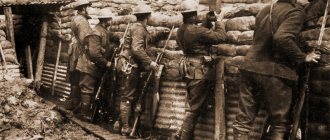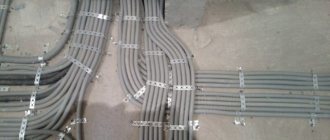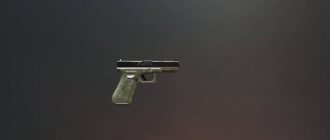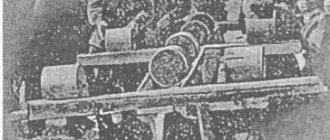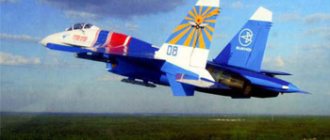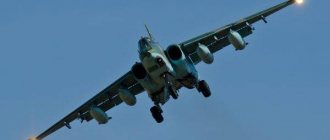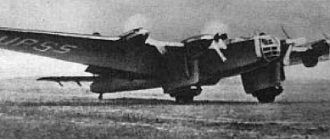In the era of gunpowder
Later, with the advent of gunpowder, bombs filled with a mixture of poisons, gunpowder and resin began to be used on the battlefield.
Launched from catapults, they exploded from a burning fuse (the prototype of the modern remote fuse), emitting clouds of toxic smoke over enemy troops. Map diagram of the first German gas attack near Ypres, April 22, 1915
In medieval China, a cardboard bomb was invented, filled with sulfur and lime. It is known that such bombs were used during a naval battle in 1161. Falling into the water, they exploded with a deafening roar, spreading toxic smoke into the air, which caused the same effects as modern tear gas. In addition to sulfur and lime, the Chinese also used other components to equip bombs: knotweed, croton oil, soap tree pods (to create smoke), arsenic sulfide and oxide, aconite, tung oil, Spanish flies.
At the beginning of the 16th century, the inhabitants of Brazil tried to fight the conquistadors by “fumigating” them with poisonous smoke from fires made of... red pepper. This method was subsequently used repeatedly during uprisings in Latin America.
Haber and Einstein, Berlin, 1914 Fritz Haber (1868-1934) was awarded the 1918 Nobel Prize in Chemistry for the 1908 synthesis of liquid ammonia from nitrogen and hydrogen over an osmium catalyst. During the war he led the chemical service of the German troops. After the Nazis came to power, he was forced to resign in 1933 from his post as director of the Berlin Institute of Physical Chemistry and Electrochemistry (he took it in 1911) and emigrate, first to England and then to Switzerland. Died in Basel on January 29, 1934.
During the Middle Ages, chemicals continued to be used for military purposes. Thus, in 1456, the city of Belgrade was defended from the Turks, including by the use of original “chemical weapons”. Residents of the city sprinkled rats with toxic powder, set them on fire and released them to meet the besiegers.
During the Crimean campaign, the English admiral Lord Dandonald proposed to his government a project to capture Sevastopol using five hundred tons of burning sulfur. The Special Committee, having examined all the details of the project, expressed the opinion that it was quite feasible and the results promised by it could undoubtedly be achieved; but these results in themselves are so terrible that no honest enemy should take advantage of them. Based on this, the committee decided that the project could not be accepted and Lord Dandonald's note should be destroyed. Nevertheless, the British did use some “stinking bombs” during the Crimean War. Thus, in the diary of Russian Vice Admiral M.F. Reinecke has an entry dated May 13, 1854: “...Today two stinking bombs, thrown into the city on April 11 from English and French steamships, were brought to Sevastopol from Odessa. They began to open one of them in Menshikov’s yard in the presence of Kornilov, and before the bushing was completely opened, an unbearable stench enveloped everyone so strongly that Kornilov felt sick; Therefore, they stopped unscrewing the bushing and gave both bombs to pharmacies to decompose their composition. The same bomb was opened in Odessa, and the gunner who opened it fainted and vomited violently.”
French artillerymen fire chemical shells
In Russia, the first tests of chemical weapons were carried out in the late 50s of the 19th century on the Volkovo Field. Shells filled with cacodyle cyanide were detonated in open log cabins where 12 cats were located. All cats survived. As a result, erroneous conclusions were made about the low effectiveness of toxic substances, and work on testing shells filled with toxic substances was stopped and resumed only at the height of the First World War - in 1915. It should be noted that the Russian top leadership, in general, before the war, was very scrupulous about any international conventions and agreements that prohibited weapons of this type. In accordance with the Hague Declaration of 1899, the provisions of which were accepted by France, Germany, Italy, Russia and Japan and joined by Great Britain in 1907, the parties agreed on the non-use of asphyxiating and nerve gases for military purposes.
Given international prohibitions, negative attitudes towards poisoners and the military’s lack of need for new, more lethal weapons, the widespread use of chemicals for military purposes was restrained until the beginning of the 20th century.
Largest military chemical attacks
In April 1915, French troops stationed near Ypres saw yellowish-green clouds approaching their positions. At that moment, few people guessed how deadly the approaching fog would be.
The Germans sprayed 168 tons of chlorine near the Belgian city. The attack killed about a thousand enemy soldiers. Those who were at higher elevations were a little more fortunate: chlorine is heavier than air, so its concentration was higher near the ground. The Hague condemned the actions of the Germans, but this did not stop them from repeating this type of attack on July 12, 1917. Moreover, Ypres was attacked again.
Photo: Global Look Press
Mustard gas
This time the Germans attacked the positions of the Anglo-French troops with other chemical weapons. These were mines with mustard gas, which was later called mustard gas - after the city under which it was used. There was no effective protection against this type of toxic substance in those years, so it was used until the end of the war. Almost 2.5 thousand people became victims of the first use of mustard gas, 87 of them died on the spot. The eyes and lungs are most sensitive to this substance: many became blind or developed severe pneumonia. In addition, several hours after spraying mustard gas on the skin and mucous membranes of the soldiers, chemical burns, blisters, and sometimes ulcers appeared, through which secondary infection occurred.
Photo: Global Look Press/Scherl
"Mystical Pestilence"
Mustard gas was no less actively used by the Italians in the war with Ethiopia in 1935–1936. Attacks on civilians were carried out on the orders of Mussolini. This happened in circumvention of the Geneva Convention, which prohibits the use of chemical, biological and toxic weapons. At first, the barrels of the toxic substance affected a small number of people. However, with each subsequent step, the actions of the Italian army became bolder, and the use of chemical weapons became more intense. On February 16 and 17, 1936 alone, Italian aircraft dropped 120 tons of bombs on the Ethiopians: 18 thousand people were injured of varying degrees of severity, 6 thousand were killed. At the same time, the use of toxic substances not only greatly reduced the number of enemy troops, but also hit the morale of soldiers and civilians. Diseases caused by chemical weapons frightened the Ethiopians: they considered them a “mystical pestilence,” or punishment from above.
Photo: Getty Images/Universal History Archive
Japanese experiments
In the ranks of the Japanese army there were special chemical units that conducted experiments with a new type of weapon. Testing took place in the occupied part of China: tear, emetic, suffocating, blister and other types of poisonous gas were tried on prisoners of war. At the same time, the Japanese not only did not hide their intentions to use chemical weapons, but sometimes warned in advance about the impending attack. During the war, at least 18 provinces of China came under attack. According to some reports, the Japanese used poisonous gases up to 2 thousand times, which led to the death of more than 60 thousand people. One of the most massive attacks occurred in October 1941, when 60 Japanese planes dropped poisonous gas shells on the Wuhan area. The Chinese, who did not have chemical protection equipment, suffered enormous losses: over ten thousand military personnel died from poisoning.
Photo: Global Look Press/Mary Evans Picture Library
Death camps
During World War II, Nazi Germany used chemical weapons in concentration camps. Mass extermination of people was carried out using the Zyklon B gas, invented in 1922 under the leadership of a German of Jewish origin, Fritz Haber. After Hitler came to power, the Nobel laureate fled the country. Years later, some of his relatives died in death camps.
For the first time, the Germans tested the deadly gas on Soviet prisoners of war. In September 1941, they forced 600 soldiers and 250 wounded Poles, transferred there from the infirmary, into the basement. In the same room, the Germans placed granules soaked in hydrocyanic acid, which emitted poisonous gas. They opened the basement doors only the next day. Seeing that some prisoners remained alive, they repeated the experiment.
According to some estimates, 4 kg of Zyklon B was enough to kill 1 thousand people. Convinced of the effectiveness of the product, the Germans continued to use poisonous gas and actively used it in Auschwitz until January 1945, until Soviet troops liberated the death camp. According to various estimates, a total of 1.4 million to 4 million people died in gas chambers and crematoria.
Photo: Global Look Press/Keystone Pictures USA
"Popeye"
The Vietnam War, which lasted about 20 years, is called a hellish jungle disco. The Americans used different means of fighting the enemy: in addition to napalm, which burned entire villages, they used both chemical and biological weapons. In August 1961, US authorities decided to use the defoliant Agent Orange to destroy Vietnamese forests, hoping to discover soldiers and guerrillas hiding in the jungle. However, the consequences turned out to be much more devastating: the substance, when entering the body, caused fatal diseases in civilians and congenital mutations in their children. According to some reports, 3 million Vietnamese were affected by chemical attacks.
Due to chemical weapons in Vietnam, among other things, a major environmental disaster occurred. In March 1967, Operation Popeye began, named after the famous cartoon character. Transport planes dispersed silver iodide into the clouds, which tripled the amount of precipitation. Fields of crops were flooded, roads, villages and trails along which Vietnamese partisans transported weapons and supplies were washed away. The use of chemicals led to the almost complete destruction of mangrove forests, reduced crop yields and hit the animal population: out of 150 bird species, only 18 remained.
Photo: Getty Images/Jacques Langevin/Sygma/Sygma
First Gulf War
The eight-year Iran-Iraq War is considered one of the largest armed conflicts since World War II: 900 thousand dead, economic damage of $350 billion on both sides, destroyed infrastructure and multibillion-dollar debts to foreign countries. The use of chemical weapons resulted in numerous casualties. Mustard gas, tabun, sarin and other toxic substances were used. A terrible example of the use of chemical weapons is the gas attack in the city of Halabja. Iraqi aircraft struck civilians in territory occupied by Iranian troops. According to the most common version, this is how Saddam Hussein punished the Kurds who refused to fight the Iranians. Because of bombs with toxic substances, over 20 thousand people were injured, 5 thousand were killed.
MORE ON THE TOPIC
Russians know about chemical attack in Syria
However, the opinions of the country's citizens about who organized it differ
The US is confused about the details of the chemical attack
Anonymous stuffing in the American press is aimed at substituting concepts and shifting emphasis from the main problems of what happened in Syria
World War I
But, as is known, the confidence of the military of that time that the future world war would take on a maneuverable character and could be won with the help of 3-inch guns was mercilessly shattered by the course of the 1914 campaign. The fighting acquired a positional character, the troops buried themselves in the ground, hiding from the enemy in trenches and dugouts.
Soldier with a French 26mm chemical rifle grenade
By the end of 1914, Germany had exhausted its ability to carry out large-scale offensive operations on the Western Front. After the Battle of the Marne, the front, more than 700 kilometers long, stabilized. Along the entire front line there were two continuous lines of trenches, one opposite the other, braided with rows of wire barriers. Both sides made efforts to build up defensive structures - additional trenches with an extensive line of passages were created, concrete pillboxes and dugouts were built. It was almost impossible to break through such a layered line of defense with infantry formations, even with artillery support. And this despite the fact that already in the September battles of 1914 on the Marne and Ain rivers, the opponents felt a shortage of artillery shells. Therefore, both warring sides feverishly began searching for new means of destroying the enemy in places inaccessible to the most powerful shells.
One of the ways to overcome the offensive crisis was the use of poison gases. It is the Germans who are considered to be the inhuman initiators of chemical warfare. However, from the very beginning of the First World War, the British were also looking for the possibility of using chemicals in combat. And if at first they were inclined to non-lethal toxic substances that could cause lacrimation (in January 1915, the tear effect of ethyl iodoacetate was successfully tested), then the unfavorable development of hostilities forced the British to look for more dangerous chemical compounds. However, in England there were no successful ideas regarding the development and use of chemical weapons, nor people capable of making decisions and organizing work in this area.
A British gun crew fires chemical shells
For their part, the Germans were aware of the Entente's interest in the use of chemical weapons in the war. And the technical level of the chemical industry, coupled with high scientific potential, allowed Germany to develop its own strategy for offensive chemical warfare. Therefore, it is more correct to consider that Germany does not have the “initiative”, but the “leadership” in the use of toxic substances.
German trench wooden mortar model 1915, used for firing chemical mines
The father of German combat chemistry and the means of its application is considered to be the German chemist Dr. Fritz Haber, head of the Kaiser Wilhelm Institute of Physical Chemistry and Electrochemistry. One of the greatest scientists of his time, who proposed a method for the synthesis of ammonia from air, winner of the Nobel Prize in Chemistry in 1918, Haber was on friendly terms with such luminaries of science as Albert Einstein and Max Planck. When the war began, Haber, filled with romantic patriotism, was one of the scientists who offered his services to the military. He saw the use of poison gases as a way to change the situation at the front. Haber was convinced that the use of asphyxiating gas was much more humane than shelling, since the gas did not cause terrible injuries to the enemy, and success was achieved solely due to the psychological effect. Fritz Haber believed that the use of chemical weapons would lead the Allies to the idea of the need to conclude a speedy peace.
The British load trench gas launchers with chemical mines
Immediately after the declaration of war, experiments with cacodyl oxide and phosgene began at the Kaiser Wilhelm Institute to study the possibility of using them in military affairs. However, the experiments were soon interrupted by an explosion in the laboratory. This, however, did not affect the general course of research and, most importantly, organizational activities. Thus, a Military Gas School was opened in Berlin, and a special chemical inspection, A-10, was formed at the Ministry of War, specifically dealing with issues of chemical warfare. Leverkusen became the center for the production of chemical warfare agents, where the Military Chemical School was transferred in 1915. By this time, there were 1,500 technical and command personnel, and several thousand workers were employed in production. In just one of its branches - the laboratory in Gyushte - 300 chemists worked non-stop.
The first development of the Military Gas School was the so-called “shell No. 2” - 10.5 cm shrapnel, in which black powder was replaced by dianisidine sulfate. Although the explosive effect of such shells negated the possible effect of a chemical charge, the first step towards the massive use of toxic substances in combat operations was taken - on October 27, this shell was used on the western front during an attack on Neuve Chapelle in the amount of 3,000 units. Although its irritating effect turned out to be small, according to German data, its use facilitated the capture of Neuve Chapelle. Subsequently, “shell No. 2” was removed from service.
In January 1915, the Germans completed the development of a new chemical shell known as the "T" - a 15 cm artillery grenade with a high blasting effect and an irritating chemical (xylyl bromide), later replaced by bromoacetone and bromoethyl ketone. The design of the "T" projectile was developed by Dr. Hans von Tappen.
English gas launchers in position
Referring to the exact wording of the Hague Declaration, Germany used these shrapnel munitions for the first time on October 27, 1914, arguing that chemical attack was not the only purpose of this attack. At the end of January, the Germans also used them at the front in left-bank Poland in the Bolimov region, but chemically unsuccessful, due to the low temperature and insufficient mass shooting.
In April, at Nieuport in Flanders, the Germans first tested the effects of their “D” grenades, which contained a mixture of benzyl bromide and xylyl.
In January 1915, the French sent their chemical 26-mm rifle grenades to the front, but their use was delayed because the troops were not yet trained in their use, and there were no means of protection. The French began using them, as well as similar chemical hand grenades, in March, but also without any noticeable results.
Thus, the first attempts to use chemical warfare agents were carried out on such a small scale and with such insignificant effect that no specific measures were even taken in the area of chemical defense.
In the current situation, the German high command quite rightly doubted the effectiveness of the use of gas shells; in addition, during this period there was an acute shortage of conventional shells at the front. As a result, Dr. Haber came up with the idea of using poison gas in the form of a gas cloud. He chose chlorine as the chemical agent, which was produced in large quantities in Germany even before the war (in 1914, 40 tons of chlorine were produced daily in Germany). Haber proposed storing and transporting chlorine in liquid form, under pressure, in steel cylinders. Cylinders were to be delivered to combat positions, and if there was a fair wind, chlorine was released towards enemy positions.
A military chemist opens the valve of a gas cylinder to begin a gas attack.
Installation diagram of a gas cylinder in a trench
What is the role of chemistry in wars? Chemical weapons
The use of chemical weapons was prohibited several times by various international agreements: the Hague Convention of 1899, Article 23 of which prohibits the use of ammunition whose sole purpose was to cause poisoning of enemy personnel; the Geneva Protocol of 1925, which was ratified by over 100 states; Convention on the Prohibition of the Development, Production, Stockpiling and Use of Chemical Weapons and on Their Destruction of 1993. However, its development, production and stockpiling in a number of countries continues.
The first chemical weapon used was "Greek fire", consisting of sulfur compounds released from chimneys during naval battles. During the First World War, chemicals were used in huge quantities: 12 thousand tons of mustard gas, which affected about 400 thousand people, and a total of 113 thousand tons of various substances. In total, during the First World War, 180 thousand tons of various toxic substances were produced. The total losses from chemical weapons are estimated at 1.3 million people, of which up to 100 thousand were fatal.
The famous inorganic chemist F. Haber (Nobel Prize laureate in 1918) was the initiator of the combat use of toxic substances by Germany during the First World War. His colleague Schroeder, who developed nerve gases in the early 1930s, was one of the most eminent chemists of his time.
Japan used chemical weapons against Chinese troops in the 1937–1943 war. The losses of Chinese troops from chemical agents accounted for 10% of the total.
Gas chambers were used by the Nazis as a cheap means of exterminating people.
Napalm was actively used by the United States during the Vietnam War. Defoliants (Agent Orange, which contains toxic dioxin) were also used, causing leaves to fall from trees.
The caus belli of the 2003 US war with Iraq was the hypothetical presence of toxic substances in S. Hussein’s possession.
Based on the nature of the physiological effect on the human body, there are six main types of toxic substances (TS) :
Nerve agents that affect the central nervous system. Toxic substances in this group include sarin, soman, tabun and V-gases.
Agent of vesicant action. They cause damage mainly through the skin, and when used in the form of aerosols and vapors, also through the respiratory system. The main toxic substances are mustard gas and lewisite.
Generally toxic agent. Once in the body, they disrupt the transfer of oxygen from the blood to the tissues. These include hydrocyanic acid and cyanogen chloride.
Like a tablecloth, like a tablecloth, cyanogen chloride spreads and gets under the gas mask. Everyone, everyone believes in the best, But a nuclear landmine falls, falls.
Maybe we offended someone in vain With a couple of hundred extra megatons, But look how the earth is now melting Where the Pentagon once was!
Asphyxiating agents mainly affect the lungs - phosgene and diphosgene.
Psychochemical agents are capable of incapacitating enemy manpower for some time. These toxic substances, acting on the central nervous system, disrupt the normal mental activity of a person or cause mental disabilities such as temporary blindness, deafness, a sense of fear, and limited motor functions. OMs from this group are quinuclidyl-3-benzilate (BZ) and lysergic acid diethylamide.
Irritant agents, or irritants (from the English irritant - irritating substance). Their effect, as a rule, is short-lived, since after leaving the contaminated area, signs of poisoning disappear within 1-10 minutes. Irritating agents include lachrymatory substances, which cause excessive lacrimation, and sneezing agents, which irritate the respiratory tract (can also affect the nervous system and cause skin lesions). Lachrymators (lacrimators) - CS, CN, or chloroacetophenone and PS, or chloropicrin. Sneeze agents (sternites) - DM (adamsite), DA (diphenylchloroarsine) and DC (diphenylcyanarsine). Annoying O They are in service with the police in many countries and are therefore classified as police or special non-lethal means (special means).
The tasks of the chemical troops include four D : decontamination (collection and burial of radioactive substances), degassing (neutralization of toxic substances), disinfection (fighting deadly diseases - plague, cholera, smallpox, typhus, etc.) and derotization (chemical fight against rats as carriers of deadly epidemics). All four Ds are also relevant in peacetime, since there are nuclear power plants and submarines, dangerous chemical production, the danger of outbreaks of deadly epidemics and rats. The accident at the Chernobyl nuclear power plant was liquidated mainly by the chemical troops of the USSR.
There are the Russian Research Center "Applied Chemistry" (St. Petersburg), and the Military Academy of Chemical Defense (Moscow). There is a university - the Saratov Military Institute of Radiation, Chemical, Biological Defense (RKhBZ). There is a magazine “Chemical and Biological Safety”. You can read: Antonov N. Chemical weapons at the turn of the century. M.: Progress, 1994.
Tags: weapons, means, poisoning, science, chemistry, war, chemicals
